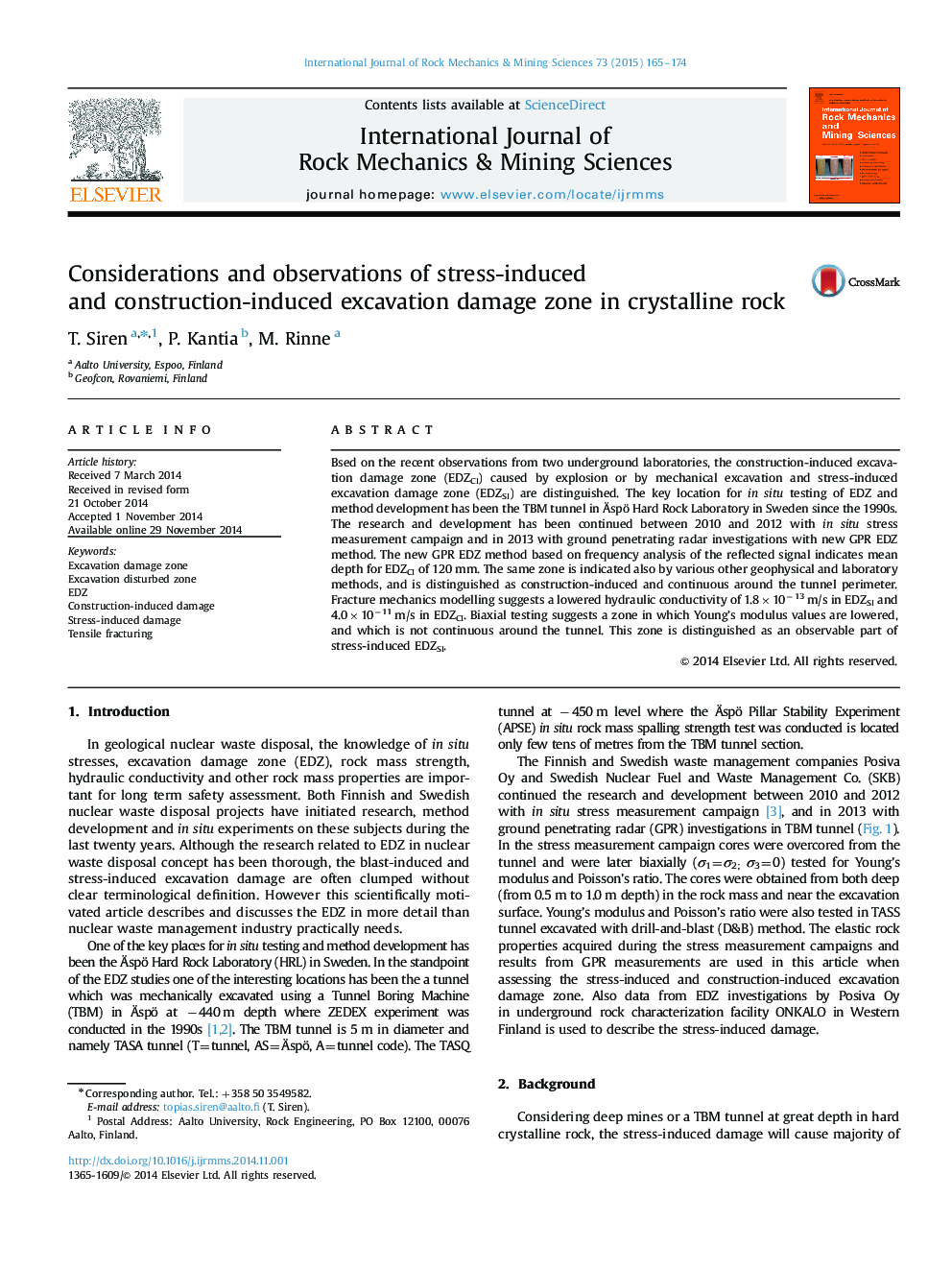| کد مقاله | کد نشریه | سال انتشار | مقاله انگلیسی | نسخه تمام متن |
|---|---|---|---|---|
| 809071 | 1468696 | 2015 | 10 صفحه PDF | دانلود رایگان |
• The stress-induced excavation damage zone EDZSI and the construction-induced excavation damage zone EDZCI are distinguished and defined.
• Several observations of the construction-induced damage zone are reported.
• Observations of the stress-induced damage zone are reported.
• Fracture mechanics modelling is used to study the properties of the EDZSI and EDZCI.
Bsed on the recent observations from two underground laboratories, the construction-induced excavation damage zone (EDZCI) caused by explosion or by mechanical excavation and stress-induced excavation damage zone (EDZSI) are distinguished. The key location for in situ testing of EDZ and method development has been the TBM tunnel in Äspö Hard Rock Laboratory in Sweden since the 1990s. The research and development has been continued between 2010 and 2012 with in situ stress measurement campaign and in 2013 with ground penetrating radar investigations with new GPR EDZ method. The new GPR EDZ method based on frequency analysis of the reflected signal indicates mean depth for EDZCI of 120 mm. The same zone is indicated also by various other geophysical and laboratory methods, and is distinguished as construction-induced and continuous around the tunnel perimeter. Fracture mechanics modelling suggests a lowered hydraulic conductivity of 1.8×10−13 m/s in EDZSI and 4.0×10−11 m/s in EDZCI. Biaxial testing suggests a zone in which Young’s modulus values are lowered, and which is not continuous around the tunnel. This zone is distinguished as an observable part of stress-induced EDZSI.
Figure optionsDownload as PowerPoint slide
Journal: International Journal of Rock Mechanics and Mining Sciences - Volume 73, January 2015, Pages 165–174
